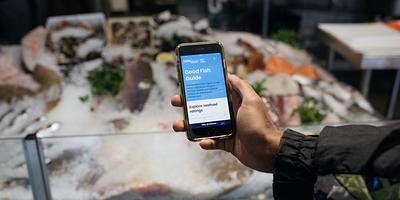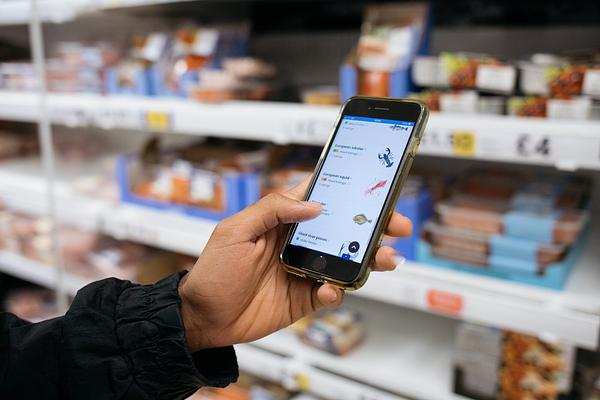
Sustainable fishing and what you can do
Jack Clarke, Sustainable Seafood Advocate for the Marine Conservation Society explains why sustainable fishing practices are vital to the health of our oceans; and how you can make more ocean friendly seafood decisions.
Fishing, when done sustainably, can provide us with a supply of tasty and nutritious food for generations to come. Globally, fish are the main source of protein for more than 3 billion people.
Until relatively recently, people thought that supplies of wild fish would be inexhaustible. But as technology has improved, our ability to catch fish has started to outstrip their ability to reproduce, threatening populations. This not only reduces a potential food supply for us but plays havoc with marine ecosystems, for example, by reducing food for other animals. Unsustainable seafood is therefore one of the biggest threats to our ocean.
A stock is population of fish that all interbreed in a certain part of the sea. If the stock is healthy and environmental conditions are good, the fish will add to the population each year and the stock will grow and grow. If we catch more fish than the population can replace each year, it’s called overfishing. It’s something we want to avoid.
The Firth of Forth represents an early, cautionary tale about the dangers of overfishing. In the 1700’s, the Forth hosted a thriving native oyster fishery. It was perhaps the world’s largest known oyster bed at the time.
Forth oysters were a vital part of Scottish seafood and were exported across Europe, with annual landings nearing 20 million in the mid 1800’s. But a lack of management led to a collapse in the oyster population, and by 1894 only 1,200 oysters per year were being landed. The population became functionally extinct, remaining so this day.
There are projects underway to restore native oysters throughout the UK, although not with the goal of commercial fishing, including in Scotland the Dornoch Environmental Enhancement Project (DEEP), Seawilding and Restoration Forth. The latter is a WWF UK-coordinated, community-led partnership project to restore native oysters (and seagrass) in the Firth of Forth. Despite all this good work it could be a long time before we can get populations close to what they used to be. You can find out more about Restoration Forth and the partners involved here.
What do we need to do to make fishing more sustainable?
Fish stocks can and do bounce back after they’ve been overfished. But, to bring fishing into sustainable levels, we need to manage how much is caught.
If everyone was allowed to catch as many fish as they wanted, wherever and whenever they wanted, we’d run out of fish quickly. So, we need to use management tools and techniques to control fishing.
The most well-known management method is a limit on catches, also known as a quota. Scientists estimate how many fish can be caught sustainably from a stock each year and divide this between all the fishing boats. Another common tool is a minimum landing size. This prevents fishers from catching small fish that may not yet have had a chance to breed and replenish the population.
Considering the effect on the wider environment is also important. Different fishing methods have different kinds of impacts. If fish are caught with a hook and line for example, the impact is relatively small because they won’t touch the seabed, and anything caught by accident can be released alive. On the other hand, trawlers, which drag heavy nets along the seabed, have a much higher impact. They can damage sensitive underwater habitats and aren’t very selective - they catch everything in their path.
Over the years, modifications have been developed to try to lessen the impact of fishing gears. For example, fishing on vulnerable seabed habitats can be prohibited. Nets can be made with bigger gaps in the mesh, to allow some animals to escape. Fishing with hooks can be banned during the daytime, to help avoid accidentally catching seabirds.
What can you do?
We all need to be more mindful of the food that we are eating and think about where it has come from or how it has been produced. You can make ocean friendly seafood decisions by making some simple swaps and avoiding seafood that causes the most damage to our oceans. But how do you know what’s best?
The Marine Conservation Society’s Good Fish Guide is a brilliant online tool to find out whether your seafood choices are sustainable. It covers pretty much everything caught, sold and farmed in and around the UK.

It takes account of the health of fish stocks, what management tools are being used, and what environmental impacts are happening, and boils them down into a handy traffic light rating. Green is the Best Choice, amber is OK to eat but improvements are needed, and red indicates Fish to Avoid.
You can save the Good Fish Guide to your phone, or use it online. The Good Fish Guide has a selection of recipes for inspiring meals using sustainable seafood and ‘how-to’ cookery videos to help you diversify the seafood you eat. You can visit these pages here.
_Billy_Baraclough_Medium,.jpg)
Thank you to Jack Clarke, Sustainable Seafood Advocate at the Marine Conservation Society for this excellent blog.
All images copyright Billy Barraclough.
